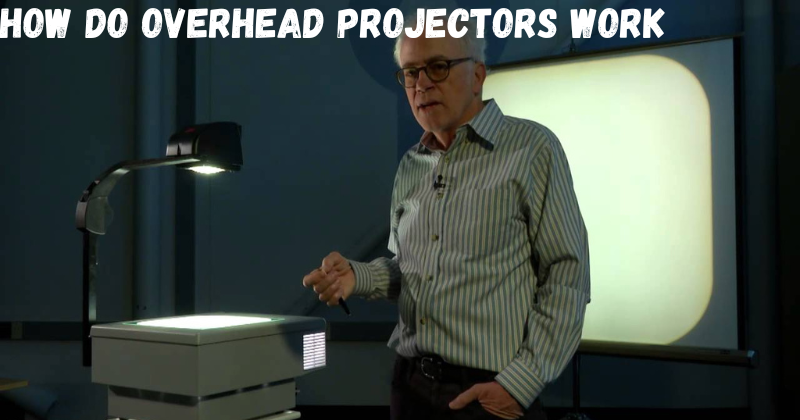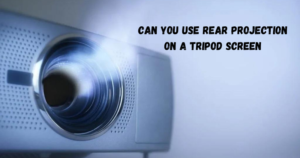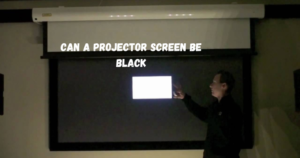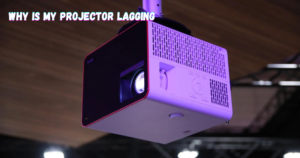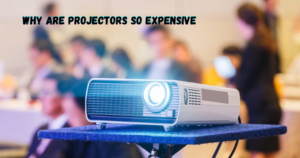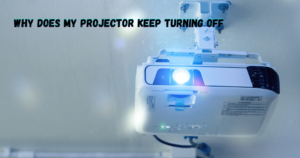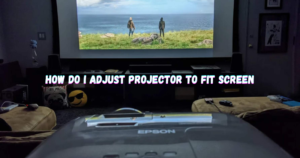Are you curious about how overhead projectors work? Overhead projectors have been around since the early 1950s and are still used widely in educational settings today.
But do you ever wonder what makes an overhead projector so useful, or even better – how does it actually function?
In this blog post, we’ll be taking a look at not only how overhead projectors work but also the many advantages they possess for classrooms and businesses alike.
What is an Overhead Projector and What It Is Used For
An overhead projector is a device used to project images onto a screen or wall. It uses a combination of light that is passed through a transparent object such as a slide, transparency, or paper.
Overhead projectors are most commonly used in classrooms and offices for presentations and lectures. They are also sometimes used in theatres and concerts to display images on a larger scale.
How Do Overhead Projectors Work
Overhead projectors use an intense light source to project an image onto a wall or screen. This light source is usually a halogen bulb that can produce high levels of heat and bright, white light.
The halogen bulb is placed in the projector’s head and its light passes through the object being projected (such as a transparency) before entering the projector’s lens. The lens then directs the light towards a mirror inside the projector, which reflects it onto a wall or screen.
The amount of brightness and focus can be adjusted by adjusting the lens and moving the head closer or further away from the projected image.
How the Lamp Works in a Projector
The lamp in an overhead projector is usually a halogen bulb. Halogen bulbs produce intense light that is suitable for projecting onto a wall or screen. The bulb is mounted inside the projector’s head and its brightness can be adjusted by adjusting the lens and moving the head closer to or further from the projected image.
Halogen bulbs are commonly used in projectors because they produce bright, white light and have a long life span. They also don’t require as much power as other bulbs, making them ideal for use in projectors.
Advantages of Using an Overhead Projector
There are several advantages to using overhead projectors over more modern technology such as LCD or LED displays. The most obvious one is the lower cost. Overhead projectors are usually cheaper than LCD or LED displays and can be used in a variety of settings, such as classrooms and offices.
Another advantage is that overhead projectors don’t require any complicated setup or technology knowledge to use. All you need to do is place your transparency on the projector’s head and move it closer or further from the wall to adjust the brightness and focus.
Finally, overhead projectors are incredibly durable and reliable. They can last for decades with proper maintenance and care. This makes them ideal for use in long-term educational settings or in offices where it’s important to have a reliable projection system.
How the Mirrors Are Used to Refract Light
Overhead projectors are equipped with two mirrors – one at the head and one on the lens. The mirror on the head directs light from the halogen bulb towards the transparency being projected, while the mirror on the lens reflects it onto a wall or screen.
These mirrors are used to refract light so that it is spread evenly across an image or screen. This ensures that all viewers have a clear view of the image, regardless of their position in the room.
The Lens and Its Function in Overhead Projectors
The lens is an important part of an overhead projector. It helps to focus and adjust the brightness of the image being projected. The lens can be adjusted by moving it closer or further from the transparency, which allows for more precise control over the intensity and clarity of the image being projected.
The lens also filters out any unwanted light that may interfere with the image being projected. This ensures that the image is clear and bright, without any distortion or interference.
Controlling the Brightness of the Projected Image
The brightness of a projected image can be controlled in numerous ways. The most common method is to adjust the lamp’s intensity, which can be done by turning a knob or dial on the projector itself.
In addition, adjusting the distance between the transparency and lens also affects the brightness of an image. Moving them closer together increases the brightness, while moving them further apart decreases it.
FAQs
What type of lens is used in overhead projector?
The most common type of lens used in overhead projector is a convex lens. This type of lens is designed to spread out light evenly across an image or screen and helps to reduce any distortion or interference from outside sources.
What material is used for overhead projectors?
Overhead projectors are usually made out of metal or plastic. The head, which houses the light source and lens, is typically made from aluminium.
How long does an overhead projector last?
With proper care and maintenance, an overhead projector can last for decades. Halogen bulbs used in these projectors have a long lifespan and don’t require as much power as other bulbs, making them ideal for use in long-term projects.
Conclusion
By now you should understand the fundamentals of how overhead projectors work and the many benefits they offer.
Whether you need to show a visual for your lecture, throw a different perspective onto a discussion or boost energy in the room, an overhead projector is an ideal choice to achieve those goals.
The latest versions are even user-friendly in terms of portability and digital presentation tools.
So if you don’t have an overhead projector at home already, it’s time to consider getting one – not only will it help liven up your lectures, presentations, and meetings, but it can also provide invaluable knowledge or experiences along the way.
